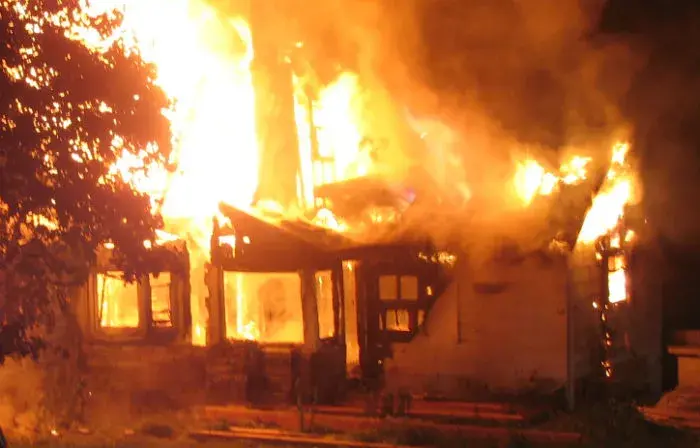National Institute of Standards and Technology (NIST) computer-modeling study of a 2012 Chicago house fire revealed the conditions that caused a surge of searing gases, which lead to the death of a 54-year-old veteran firefighter captain despite efforts by paramedics to revive him.
 NIST examined the fire dynamics of the incident at the request of the National Institute for Occupational Safety and Health and the Chicago Fire Department. Simulations conducted with NIST’s Fire Dynamics Simulator (FDS) examined the fire’s temperature and pressure at various locations and the resulting flow path. With the agency’s Smokeview visualization software, NIST researchers also developed a graphic model of the fire’s behavior and the conditions that firefighters likely experienced during the course of their inside operations.
NIST examined the fire dynamics of the incident at the request of the National Institute for Occupational Safety and Health and the Chicago Fire Department. Simulations conducted with NIST’s Fire Dynamics Simulator (FDS) examined the fire’s temperature and pressure at various locations and the resulting flow path. With the agency’s Smokeview visualization software, NIST researchers also developed a graphic model of the fire’s behavior and the conditions that firefighters likely experienced during the course of their inside operations.
The NIST report and video, released in December 2014, explains the fire in a covered back porch caused a closed steel-faced, wood-framed door to crumble. This released pressure, causing hot gases to pour into the adjoining hallway where the victim and another firefighter were moving a fire hose. The coincidental timing of the responders’ actions and the door’s failure caused the fatal event. The study found that in less than five seconds, the flow of gases caused the hallway temperature to soar, from about 140 degrees Fahrenheit to at least 500 degrees Fahrenheit.
Another NIST fire-dynamics modeling study clarified the circumstances and violent fire behavior of a lethal 2011 blaze in a San Francisco hillside home. The fire in the multi-story, single-family dwelling claimed the lives of two firefighters. The study concludes that the failure of basement windows near the fire origin transformed an interior stairwell into a “chimney for hot gases” that poured onto the first floor at an estimated 20 miles per hour. According to the model, within two minutes after the first basement window failed, the temperature near the first-floor door roughly doubled to more than 400 degrees Fahrenheit. This analysis shows the importance of determining how heat and gases will likely flow in a burning building before mounting an attack and provides insights into the thermal conditions of fires that have resulted in line-of-duty deaths of firefighters.
NIST has used FDS to study multiple fires that have resulted in firefighter deaths. Insights into fire behavior and thermal conditions gathered from these studies have shaped research aimed at improving the safety and effectiveness of firefighters. FDS “has become the tool of choice by both the fire research and fire engineering communities,” according to the International Forum of Fire Research Directors, an organization that promotes international cooperation in fire safety research. As a result, the forum says, “many new insights have emerged, further extending our understanding of the behavior of fire phenomena.”
FDS and Smokeview were critical to the NIST study that determined the factors that led to the collapse of the World Trade Center towers in the aftermath of the terrorist attacks on Sept. 11, 2001. The software also has aided reconstructions and experimental studies of fires in houses, high-rises, mines, aircraft cabins, nuclear facilities, road tunnels, movie theaters, parking garages, subway stations and more. In addition, FDS and Smokeview have been used to investigate circumstances in line-of-duty deaths of firefighters, and architects and engineers employ the tools when designing fire-protection systems for buildings and other structures.
As NIST and collaborators continue to improve the software tools' capabilities for predicting the spread, growth and suppression of fire, use is spreading to a growing number of nations. Volunteer translation services for FDS and Smokeview support and documentation are offered in at least 15 languages.
FDS and Smokeview help strengthen the scientific foundations of modern firefighting tactics and training. “Our aim is to bridge the gap between basic research and practical application, while maintaining the highest standards of scientific rigor,” says Kevin McGrattan, one of the leaders of the NIST fire modeling project. “At the same time, we are working to make the tools more accessible and useful to the entire fire-safety community.”
